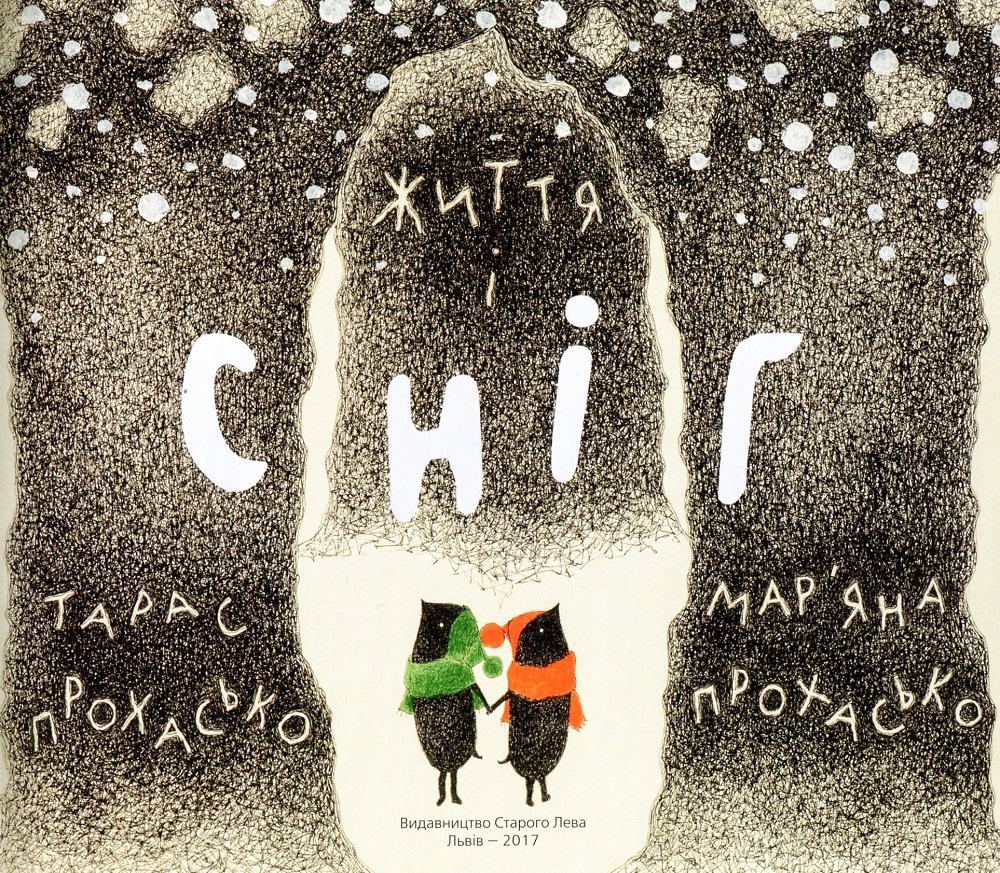Life is an adventure: Face your fears and uplift your own essence with Life and Snow By María Teresa Salcedo Montero and Muyun Long
Published: 11 April 2023
Blog by María Teresa Salcedo Montero and Muyun Long
Life and Snow (Життя і сніг) is a captivating Ukrainian picturebook published by the Old Lion Publishing House (Видавництво Старого Лева) in 2017. Written by Taras Prokhasko (Тарас Прохасько) and illustrated by Marjana Prokhasko (Маряна Прохасько), the picturebook tells the story of Povz (Повз) and Murkavka (Муркавка), two new-born mole twins, and explores complex philosophical issues. The protagonists celebrate their surroundings while learning about the legacy of their ancestors and the importance of appreciating life.
The work of Taras Prokhasko, a well-known novelist and journalist who won the 2020 Shevchenko National prize, is often associated with magical realism and meditative philosophy. His wife, Marjana Prokhasko, is committed to bringing readers a unique visual experience through her illustrations. Notably, nature and the meaning of life have always been one of the main themes in Prokhaskos’ work. In fact, Life and Snow can be seen as a continuation of their previous picturebook Who Makes the Snow? (Хто зробить сніг, 2013)—an exploration of the same topic with less text but no less profoundness.
Life and Snow is a heartwarming story showcasing the subtle relationship between time and life in a forest: seasons pass, and moles grow. The cycle of the seasons symbolises the circle of life, as the name of the book Life and Snow suggests. Moles become adults, dig their homes, become parents, just like their parents and ancestors, and in the end, they die. However, the ones who passed away will come back in other forms. The living and the dead will meet again, just like the spring will meet the winter. This is the meaning of life.
Coupled with the poetic text, the coloured pencil illustrations provide readers with textured, hand-crafted aesthetics. Thus, this picturebook allows the readers to explore the life of moles and the four seasons in the forest. The twins are born in the grass-green of spring, but their adventures begin in the strawberry-red summer. The fluttering golds mark the arrival of warm autumn, yet it is the snow from their ancestors’ story that attracts the twins the most. When the cold winter arrives, the forest is replaced by shades of grey. However, colours come back when everyone comes out and watches for the snow made by the forebears of all the forest residents. The authors use a spread to show this harmonious picture where the snow-covered woods become a canvas, and colourful hats and scarves of different animals decorate the colourful drawing. At the end of the story, the forest seems to regain its peace, but the emergence of the twins from the snow suggests that the story is not yet over.
In one of the illustrations, Mom mole jumps on a trampoline and readers may recognise the message: ‘life is an adventure’ (La vie est une aventure), present in the frames hanging on the wall. The journey of Povz and Murkavka guides these two young twins towards unexpected events, discovering the world whilst they meet others, overcoming challenges, and facing their fear of the unknown. The exploration of the forest out of the tunnels drives them to start a friendship with some squirrels who live on a tree, meet a beaver and its home—the river, and go to the hedgehog’s café. The latter narrates stories about animals from other forests, the sea, the desert, and even the glaciers. Through these encounters, Povz and Murkavka begin to know the world deeper, be amazed at how other animals live, and realise how life could take innumerable forms.
Nonetheless, Povz also begins to fear birds after seeing a terrible owl shadow. Later, birds’ presence lurks him through the different illustrations: in the reflection of the river, in the corner of the café, or over a tree’s branch. It is meaningful that Povz’s fear starts because of an owl’s silhouette that covers him in an illustration—a dark presence that does not allow him to see anything else. Some fears work that way, keeping us from seeing the cause of our distress. Luckily, the hedgehog points out how he also was afraid of strangers because he thought they did not have anything in common. It is the unknown that causes fear, and fear prevents understanding. Precisely, the arrival of the snow with the presence of their ancestors allows Povz and the birds to see that all animals are connected through life and death, realising that they are more alike than they thought. Friendships and facing fears help us to grow, appreciate life beyond our own experiences, and collectively build new perspectives. Moles are almost the same on the outside, but they are all different at heart. This book presents how being scared of others could seem natural because of our dissimilarities. However, although moles, squirrels, beavers, hedgehogs, or birds look different, and their ways of living, feeling, or thinking could seem like separate realities, their inner selves have more in common than often meets the eye. Therefore, Life and Snow is an inspiring book to read and discuss in primary school as it may encourage readers to think about the differences and affinities between individuals. Moreover, it may introduce children to the adventure of exploring beyond our immediate reality with an open understanding. This is especially relevant in our transcultural and diverse world.
Book Details
Life and Snow (Життя і сніг)
Taras Prokhasko (auth.) and Marjana Prokhasko (illust.)
Lviv: Stary Lev Publishing House, 2017

First published: 11 April 2023

